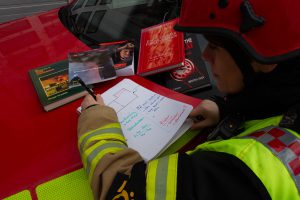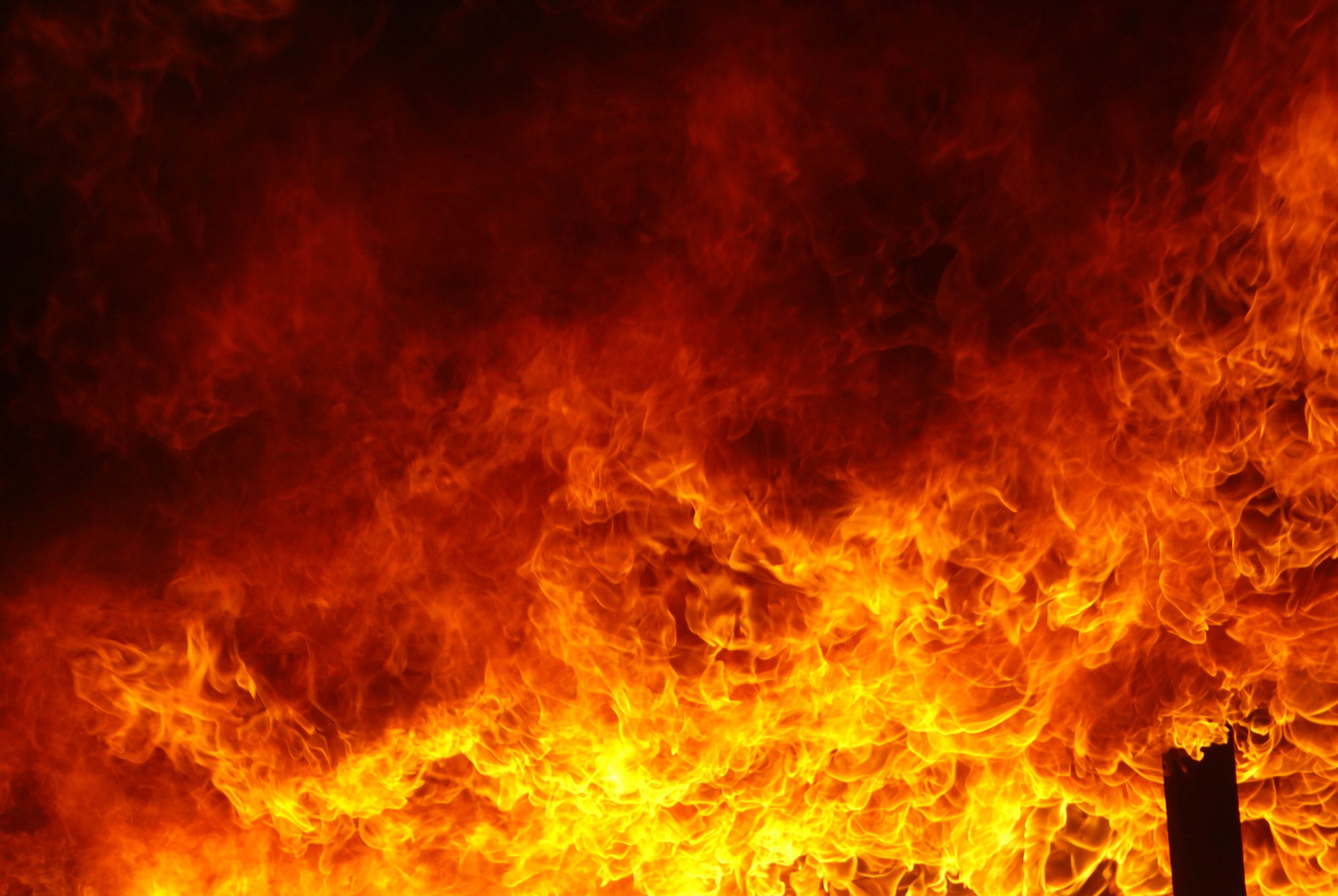 A fire and rescue service organization have a hierarchical approach to management, although the work at an accident site in many cases requires a high degree of flexibility.
A fire and rescue service organization have a hierarchical approach to management, although the work at an accident site in many cases requires a high degree of flexibility.
Traditionally, the fire and rescue service has been organized on the basis of training and qualifications achieved through training: members of the organization have ranks based on their training qualifications. There is a fairly strong military tradition.
In most cases, the fire service is organized in three or four command levels. A crew commander, which is the first level, is in charge of 2 – 7 firefighters. A station officer (on-scene commander), which is the second level of command, is in charge of 2 – 4 crew commanders and a chief officer (incident commander) is in charge of 2 – 4 station officers. However, even a very large event, such as a fire in a large industrial facility, requirement rarely exceeds more than 40 – 60 firefighters but this is more than most municipalities have available themselves. So, a large incident usually requires cooperation between municipalities. Also, it should be noted that the head officer of the organization (a fire chief or a commissioner) has overall responsibility and may at any time assume command over an operation. This rarely happens, but it gives a head officer the possibility to decide upon allocation of resources between two (or more) simultaneously ongoing operations, replace incident commanders or decide long-term objectives for complex or time-consuming operations.
An incident commander plays a special role at operations and some very specific obligations and responsibilities are related to this role. According to Swedish law there must be an incident commander at any fire and rescue operation. Only fire officers can be incident commanders and their qualifications are regulated by law. The purpose of having an appointed (and competent) incident commander is of course to effectively and safely carry out and manage operations. Depending on the type, characteristics and nature of an incident the role of the incident commander can be carried out by a fire chief but is usually assigned to a station officer, depending on the type and characteristics of an incident. However, each municipality may organize this in any way they please, as long as the qualifications for competency are fulfilled (as required by national regulations, due to the obligations and responsibilities linked to the incident commander).
Since the obligations and responsibilities that come with the role of incident commander involve restrictions on civil rights and liberties, these must be addressed consistently and based on informed judgments. These obligations and responsibilities include
- to initiate and end fire and rescue operations
- interference with the rights of others
- impose a duty on civilians to serve
- conduct surveillance at the expense of others
- request assistance of other authority, and to
- notify the authority responsible for defects or irregularities that could lead to other emergencies.
Incident commanders must of course not make decisions on these issues arbitrarily or by tradition: each decision must be substantiated and assessed against a specific situation. The decision must be necessary and the action or actions leading to the decision must outweigh the intrusion on the individual or individuals affected by the decision. The obligations and responsibilities therefore put fairly high demands on the skills of the individual who is the incident commander.
Decisions made regarding these obligations and responsibilities must be reported in writing. The decision must specify when and by whom the decision is taken, the reasons for the decision and to whom it relates. If the incident commander is not at the scene in person, which is fully legitimate, e.g. at a command center (which have become more common over the past few years), there are high demands on good, thoughtful and informed decision making including effective and clear communication between the incident commander and on-scene commanders.
What’s most important about have a command system, is that the management of fire and rescue operations should include:
- Foresight – long and short-term perspectives
command and control during operations must consider events, procedures and tasks in the long-terms as well as the short-term perspectives. It’s not sufficient, which can often be the case, to consider ongoing events only. - Flexibility
due to the inherent dynamics in operations, there must be a large degree of flexibility: the organization and its staff must be able to adapt to changing conditions, conditions that change due to the nature of the event as well as due to procedures taken by the fire service. - The need for assistance must be at the center
people call for help and they expect help, which must stay in focus throughout the operation. There’s no end in itself to perform operations, there has to be a purpose and objectives has to be set for each operation. - Logic in roles
there must be reasonable expectations placed on firefighters and fire officers and they must have adequate education and training for the situations they approach - Risks, contingency and operations
in addition to ongoing operations the command system must also manage contingency as well as risks in the local community - Efficient use of resources
available resources should be used efficiently, including allocation of resources to wherever a need arises - Dynamic situation
the command system must have an awareness of the inherent dynamics in operation: operations are like a game of chess where chess pieces as well as the game board changes character continuously - To gain and maintain control
to gain and maintain control can be said to be the overall objective of an operation - Leadership is important for individuals, groups and organizations
fire and rescue operations are performed by individuals working in teams and the command system must pay attention to how this affects operations
Overall, the command and control system in the Swedish fire and rescue service is considered to be a viable system, able to meet the demands of adapting in a changing environment. This is based on relatively well trained and experienced firefighters and fire officers.
